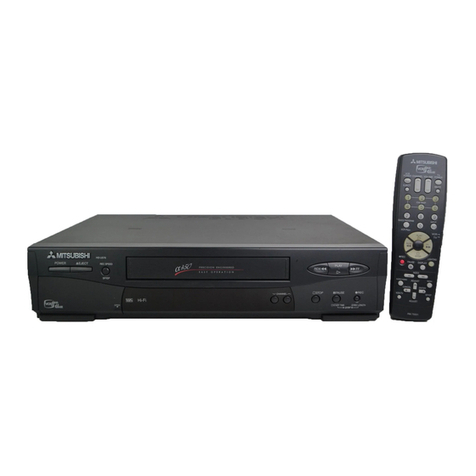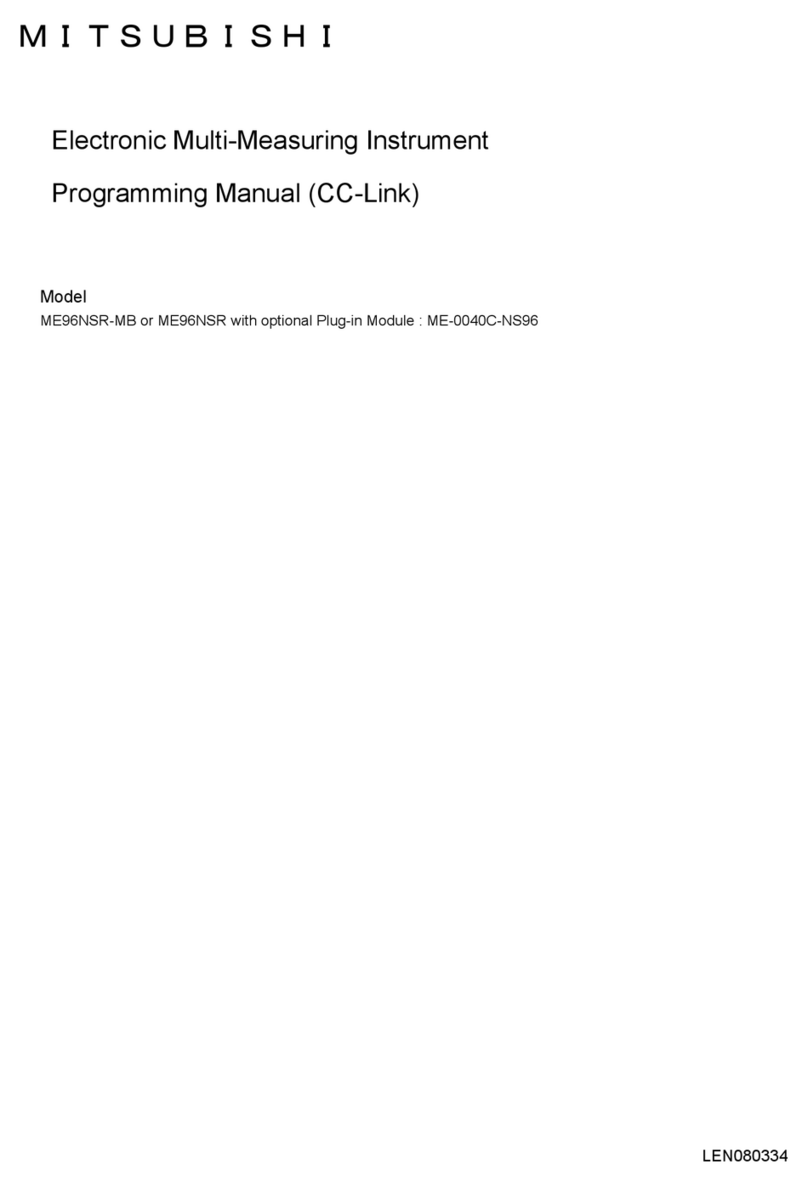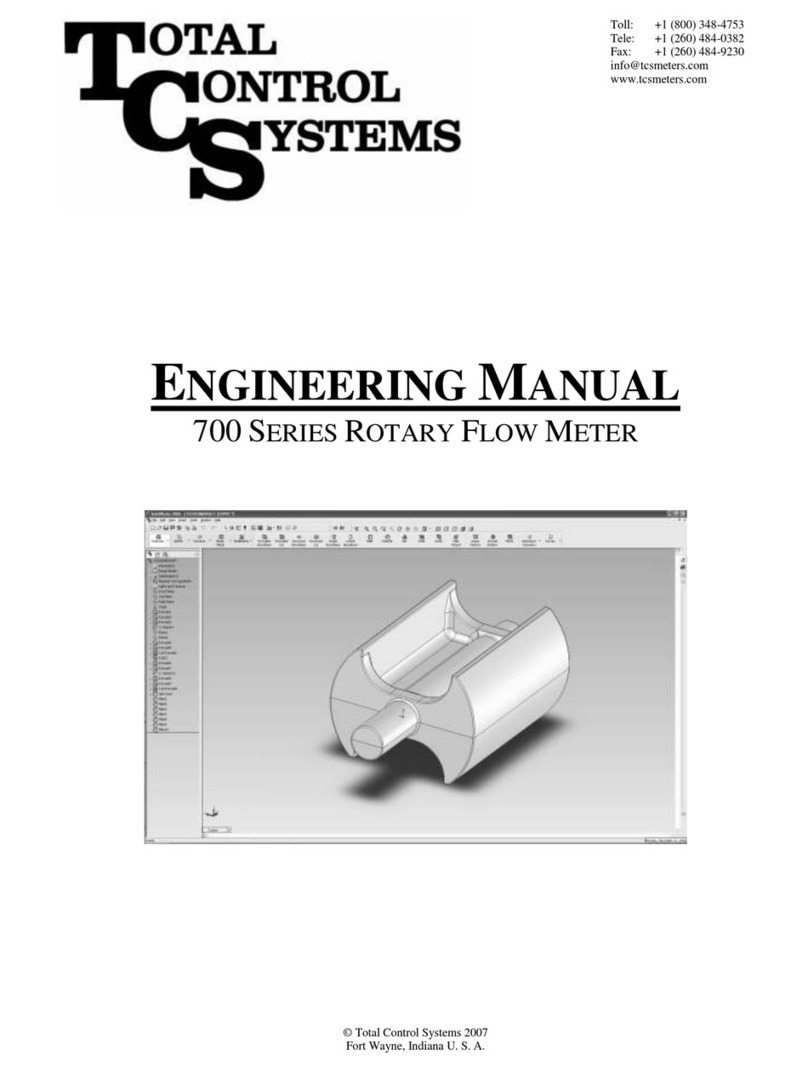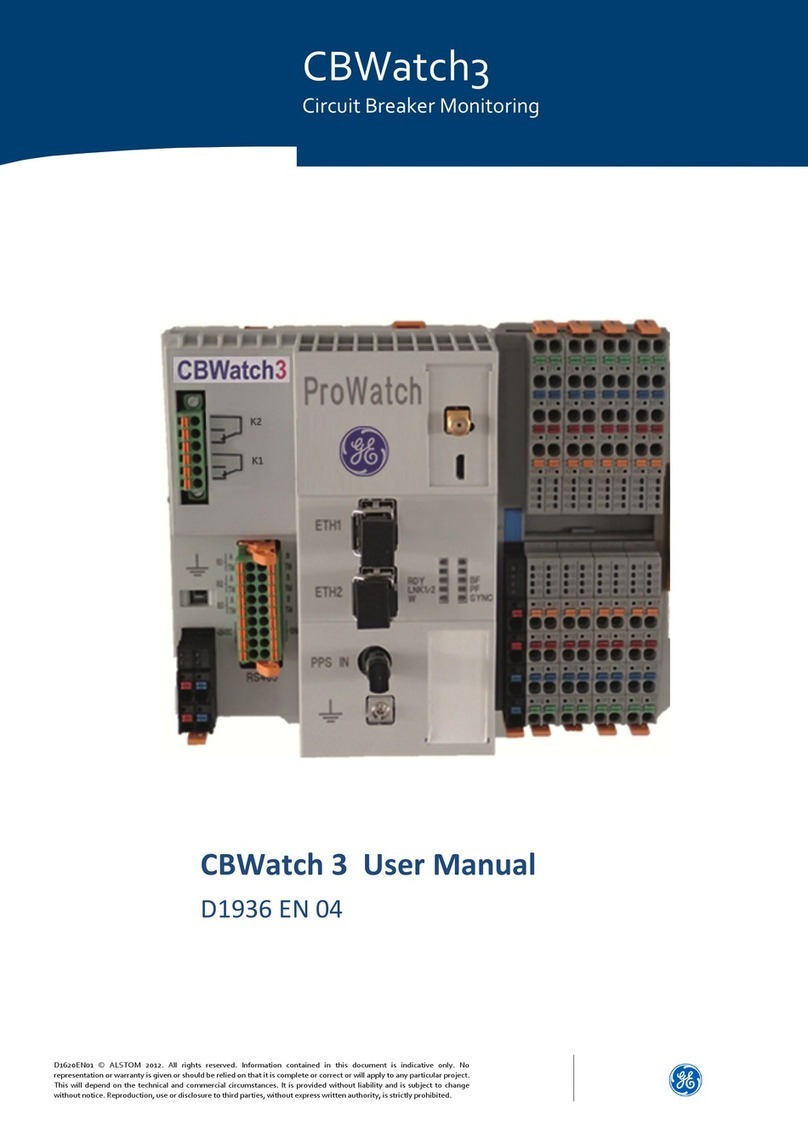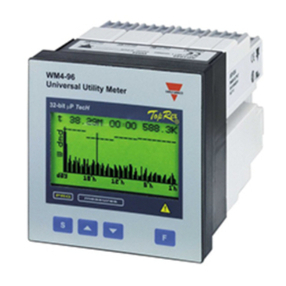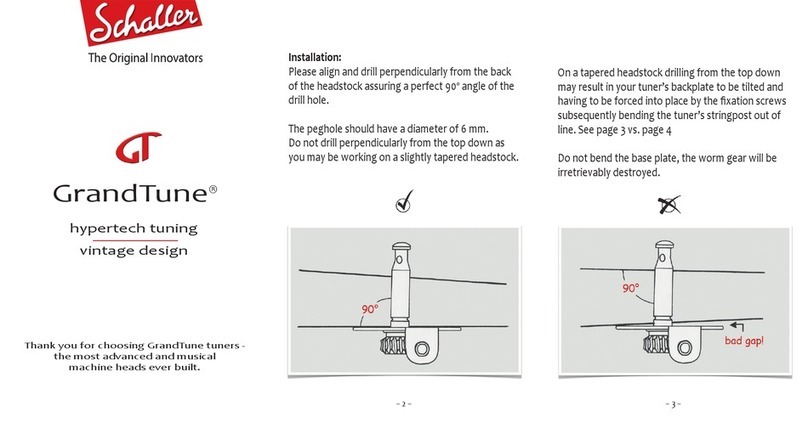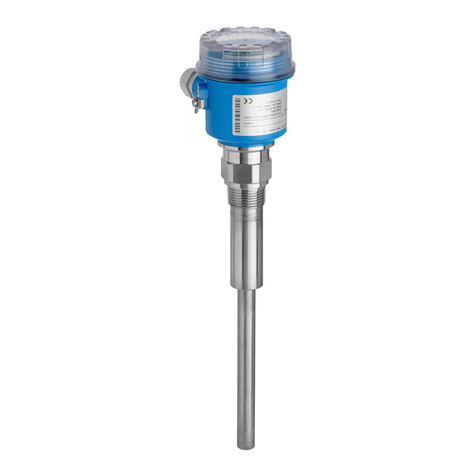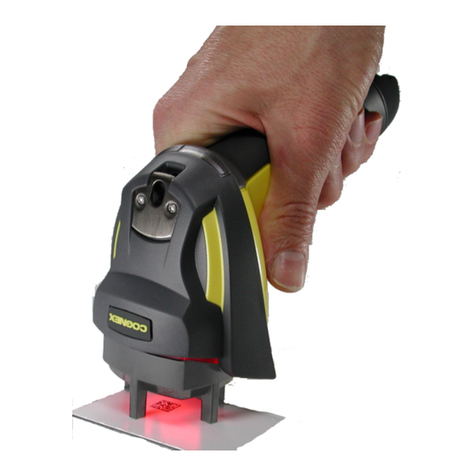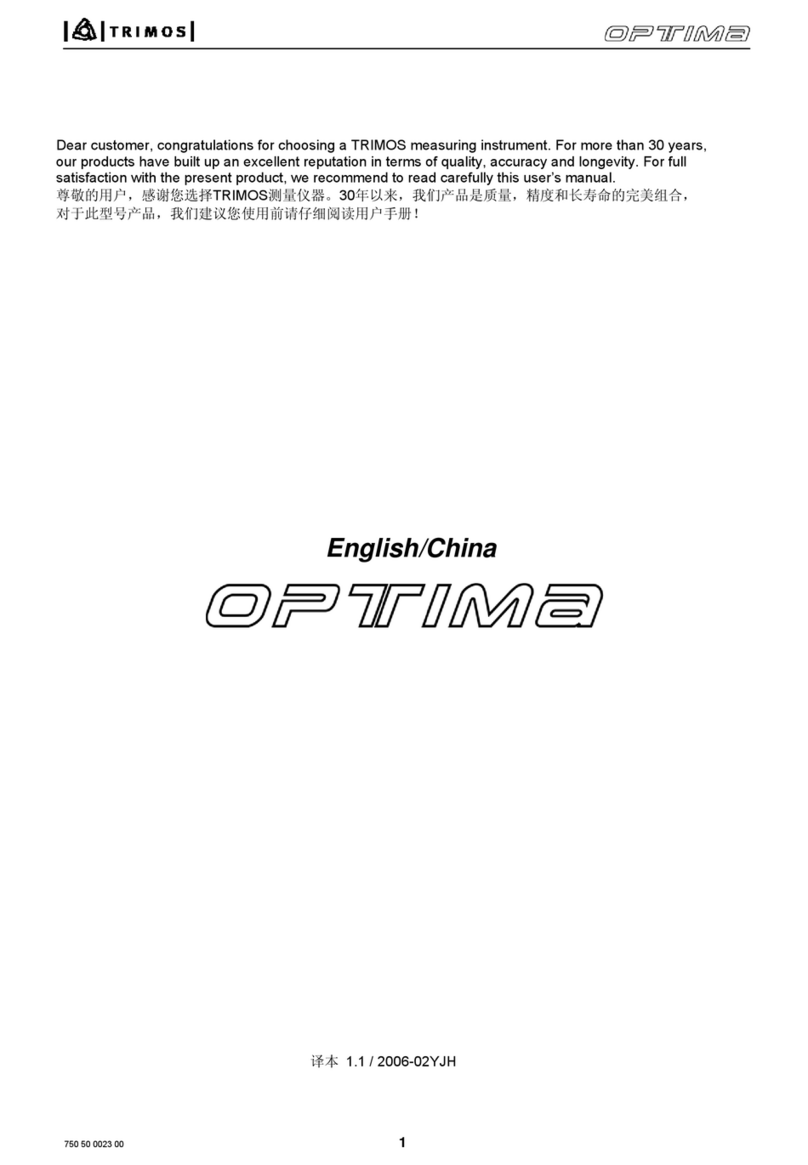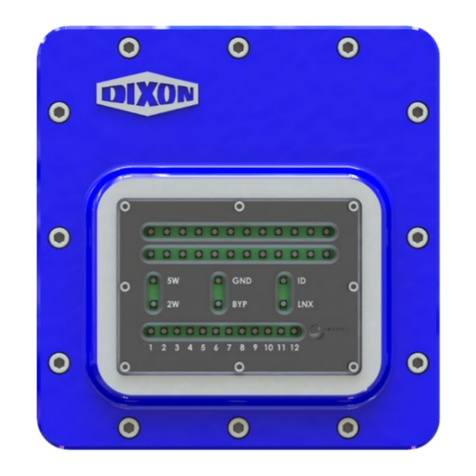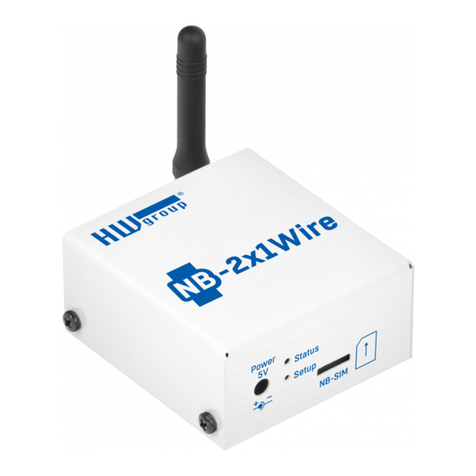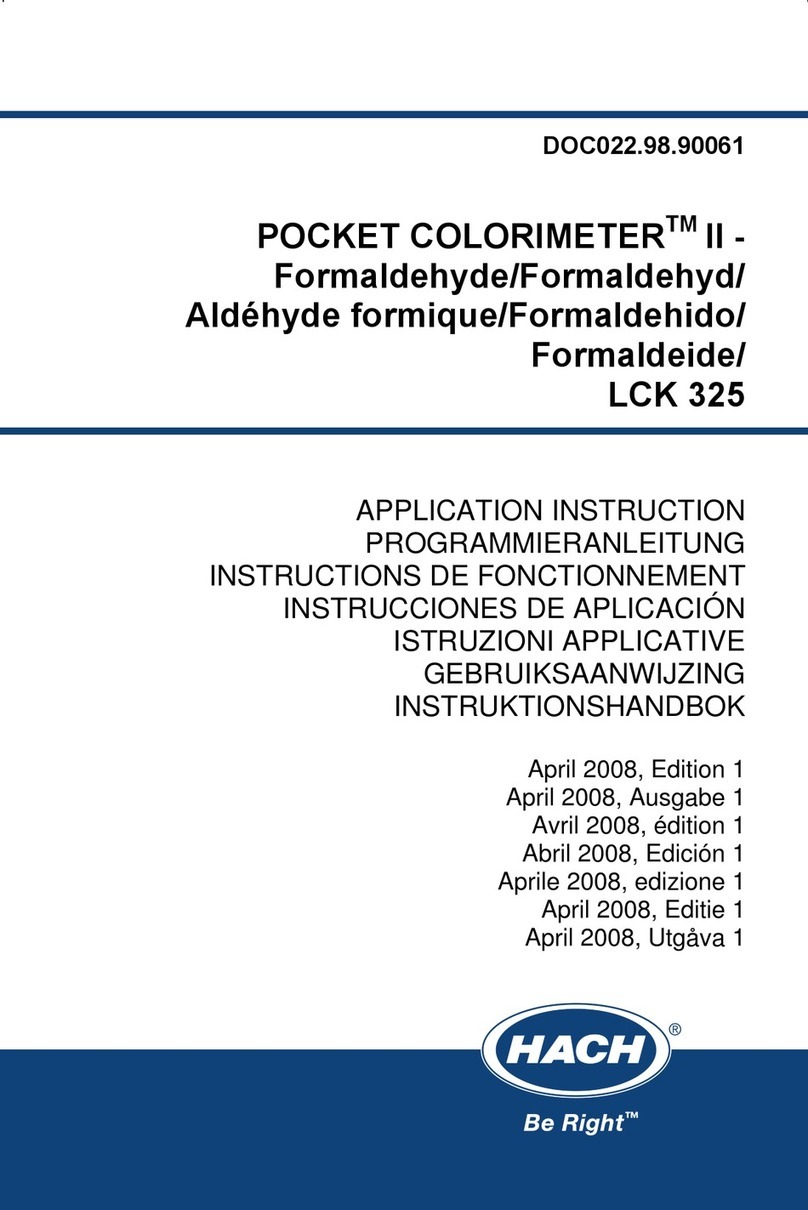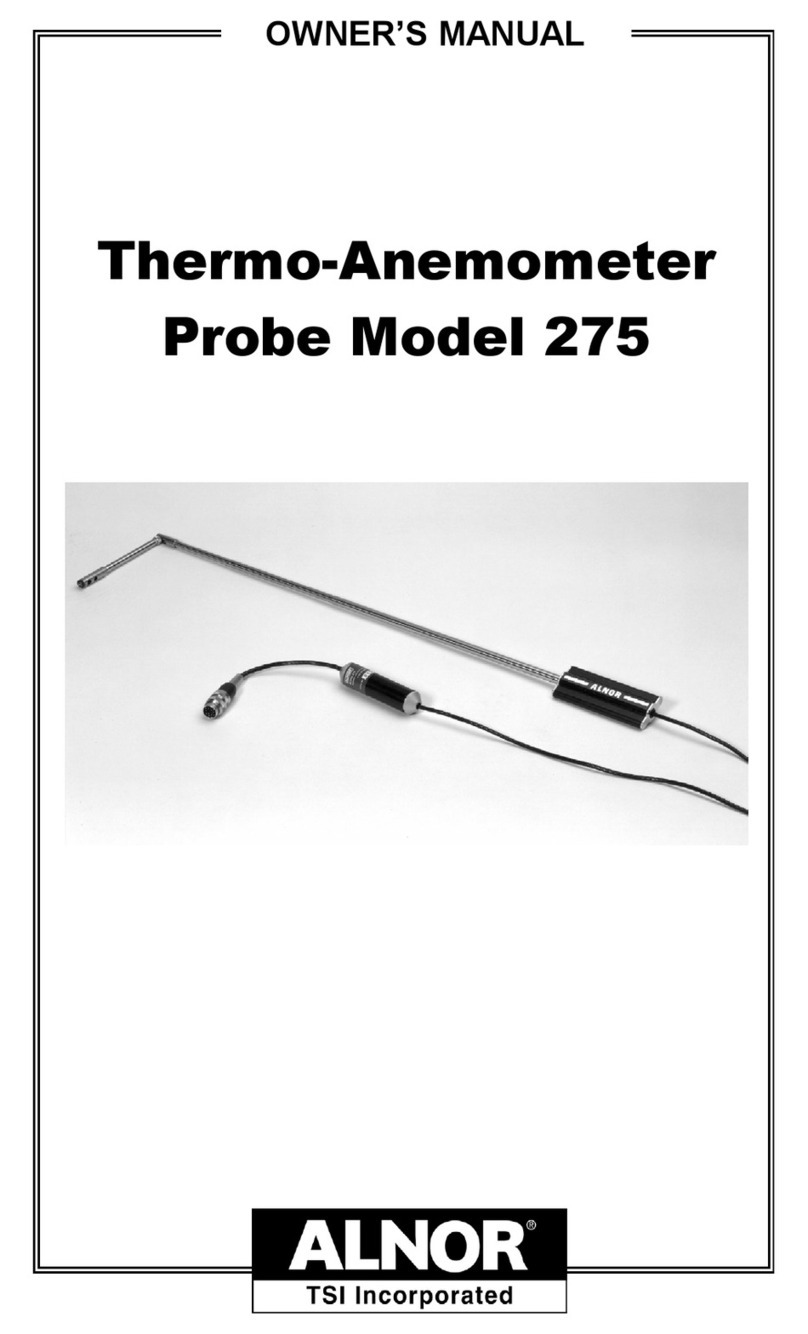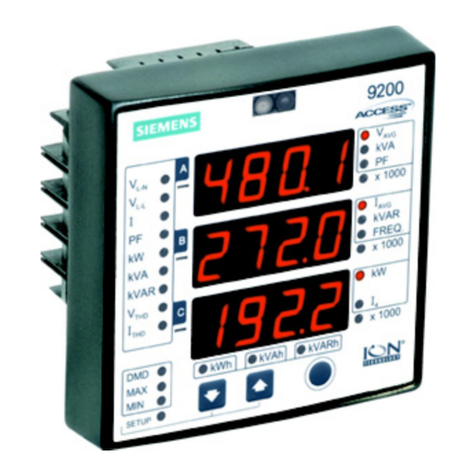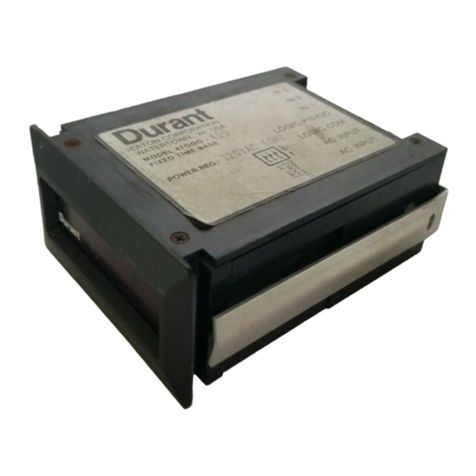Mitsubishi ME96SSR-MB User manual

MITSUBISHI Electronic Multi-Measuring Instrument
Types
ME96SSR-MB
User's Manual: Detailed Edition
●Before operating the instrument, you should first read thoroughly
this operation manual for safe operation and optimized
performance of the product.
Deliver this user's manual to the end user.

Check on your delivery
Check the following point as soon as you receive Mitsubishi Electronic Multi-Measuring Instrument.
Parts name Quantity Specifications
User’s Manual
(Simplified)
1
A3 size
Attachment lug
(with screw)
2
About the optional plug-in module sold separately
This product has the following optional plug-in module.
It is possible to correspond to various I/O by installing the optional plug-in module.
We hope that you will order to us.
I/O specifications
Type name of
optional plug-in module Analog output Pulse/Alarm
output Digital input Digital output Communication
ME-4210-SS96 4 circuits 2 points 1 point --
ME-0040C-SS96 --4 points -CC-Link
ME-0052-SS96 --5 points 2 points -
Note “ME-4201-NS96”, “ME-0052-NS96” and “ME-0040C-NS96” can not use in the
ME96SSH-MB. They can use for ME96NSR, ME96NSR-MB only.
I/O Parts Specifications Type name of
optional plug-in module
Analog output Output :4 to 20mA
Load resistance :600Ωor less ME-4210-SS96
Pulse/Alarm output No-voltage ‘a’ contact
Contact Capacity :DC35V, 0.1A or less ME-4210-SS96
Digital input Contact Capacity :DC24V(DC19 to 30V),7mA or less
Input Pulse Width :30ms or more
ME-4210-SS96
ME-0040C-SS96
ME-0052-SS96
Digital output No-voltage ‘a’ contact
Contact Capacity :DC35V, 0.2A or less ME-0052-SS96
In this manual, when the optional plug-in module is installed, it explains.
- 1 -

- 2 -
Features
This instrument measures the load status by inputting the secondary side of the VT and CT, and displays
various measurement values.
This instrument enables measurement of integrated active energy divided into two time segments
such as peak/off-peak and day/night. (Periodic Active Energy)
The password protection setting avoids undesired change of settings or deletion of measured data.
The instruments with transmission functions (MODBUS®RTU communication, CC-Link
communication) are able to transmit the measured data to superior monitoring devices. (CC-Link
communication: When the ME-0040C-SS96 optional plug-in module is installed)
The instruments with analog/pulse output function are able to output key measurement factors
(current, voltage, active power, power-factor, and Active Energy) of the power receiving point alone and
are optimum for remote monitoring.(When the ME-4210-SS96 optional plug-in module is installed)
This instrument complies with the requirements of the CE marking, UL standards, KC mark, and
FCC/IC.
MODBUS®is a registered trademark of SCHNEIDER ELECTRIC USA, INC in the United States.

- 3 -
TableofContents
Check on your delivery ····················································································································1
About the optional plug-in module sold separately·················································································1
Features·······································································································································2
Table of Contents ···························································································································3
Safety precaution ···························································································································5
Requirements for compliance with the EMC directive·············································································8
Instructions for Handling
1.Display and Button Functions of Each Part ······················································································9
2.Function Modes ·························································································································12
3.Setting
3.1 Setting Flow························································································································13
3.2 Setting Menu 1: Basic Settings (Setting the Phase Wire System, Display Pattern, VT/Direct Voltage,
CT Primary Current, etc) ·······································································································15
3.3 Setting Menu 2: Communication Settings (Setting the MODBUS® RTU communication and CC-Link
communication)···················································································································19
3.4 Setting Menu 3: Display Settings (Setting Maximum Scale, Active Energy Measurement, and
Harmonic Display, etc.) ·········································································································21
3.5 Setting Menu 4: LCD Settings (Setting Model Display, Version Display, Backlight, and Display Update
Time)·································································································································23
3.6 Setting Menu 5: Pulse and Alarm Settings (Setting Upper/Lower Limit Alarm, Motor Starting Current
Mask Function, Pulse Output, etc.)··························································································24
3.7 Setting Menu 6: Setting the Analog Output················································································29
3.8 Setting Menu 7: Setting Periodic Active Energy, Digital Input/Output·············································32
3.9 Setting Menu 8: Special Settings (Setting Operating Time, Phase Display, IEC mode)························33
3.10Setting Value Confirmation Menus 1-9: Confirming the Settings in the Setting Menus 1-8 and Test
Mode in Setting Menu 9 ········································································································35
3.11Initializing Related Items by Changing Settings ··········································································36
3.12Initializing All Settings ···········································································································36
3.13Setting the Special Display Patten P00·····················································································37
3.14Examples of Simple Settings··································································································39
4.Using Test Mode ························································································································41
4.1 Test Menu 1: Communication Test···························································································42
4.2 Test Menu 2: Alarm Output/Digital Output Operation Test ·····························································43
4.3 Test Menu 3: Zero Span Adjustment for Analog Output ································································44
4.4 Test Menu 4: Analog Output Operation Test···············································································45
4.5 Test Menu 5: Pulse Output Operation Test ················································································46
5.Operation
5.1 Basic Operation
Switch display·····················································································································47
Switch phase······················································································································47
Bar graph display ················································································································48
Switching measurement factors displayed on bar graphs·····························································48
Cyclic display······················································································································49
Harmonics display ···············································································································49
Maximum value and minimum value display··············································································51
Display of maximum value and minimum value··········································································51
Clear the maximum/minimum value·························································································51
Active energy / reactive energy display ····················································································52
How to change the unit of Wh, varh·························································································52
Wh, varh zero reset··············································································································52
Reactive energy counting method (2 quadrant counting / 4 quadrant counting)·································53
Each measurement item display during power transmission·····················································53
Demand time and demand value of current demand ···································································54

- 4 -
Table of Content
5.2 Usage According to Purpose (Alarm, Periodic Active Energy, Operating Time, Password, etc.)
Display and operation of the upper/lower limit alarm ···································································55
Canceling the upper/lower limit alarm ······················································································56
Stopping backlight flickering caused by upper/lower limit alarm generation ······································56
Upper/lower limit alarm items on the alarm contacts····································································56
Display of periodic active energy·····························································································56
Resetting periodic active energy to zero···················································································56
Display of operation time·······································································································57
Resetting the operating time to zero ························································································57
Display and operation of digital input/output status ·····································································57
Releasing the digital input latch ······························································································57
Preventing maximum value update by motor starting current ························································58
Password protection setting···································································································58
6.Other
6.1 Display Pattern Contents·······································································································59
6.2 Maximum Scale Value ··········································································································61
6.3 Possible Setting Range for Maximum Scale ··············································································62
6.4 Measurement Items and Correspondence between Display and Output ··········································65
6.5 Measurement Characteristic···································································································66
6.6 Troubleshooting···················································································································67
Installation
1.Dimensions·······························································································································68
2.Mounting ··································································································································70
3.Wiring ······································································································································71
4.Wiring Diagram··························································································································73
Specifications
1.Specification······························································································································79
2.Applicable Standards···················································································································80
3.Precautions for MODBUS® RTU Communication···············································································80
4.Precautions for CC-Link Communication ·························································································80
5.Setting Table (Factory Settings and Customer Setting Note) ································································81

SafetyPrecaution
(Always read these instructions before using this equipment)
For personnel and product safety please read the contents of these operating instructions carefully before
using.
Make sure that the end users read this manual and then keep the manual in a safe place for future
reference.
Make sure to deliver this manual to the end-user.
If you are considering using this instrument for special purpose such as nuclear power plants, aerospace,
medical care or passenger vehicles please refer to our sales representative.
HAZARD SYMBOLS
Read these instructions carefully and look at the equipment to become familiar with the device before
trying to install, operate, service or maintain it. Terminal of control power (MA, MB) and voltage inputs
(P1, P2, P3, PN) have hazards of electric shock, explosion, or arc flash. Turn off power supplying this
device and the equipment in which it is installed before working on it.
Indicates that incorrect handling may cause hazardous conditions. Always follow the instructions because
they are important to personal safety. Otherwise, it could result in electric shock, fire, erroneous operation,
and damage of the instrument. If the equipment is used in a manner not specified by the manufacturer, the
protection provided by the equipment may be impaired.
CAUTION
■ Normal service conditions
Use the instrument in an environment that meets the Normal service conditions as following points:
●Ambient temperature: -5 to +55°C
●Average day temperature: 35°C or less
●Humidity: 0~85%RH, non condensing.
●Altitude: 2000m or less
●Pollution Degree: 2 or less (Note 1)
●Atmosphere without corrosive gas, dust, salt, oil mist.
●Transient over voltage: 4000V or less (Note 1)
●A place without excessive shocks or vibration.
●Do not expose to rain and water drips.
●Do not expose to direct sunlight.
●An area in where no pieces of metal and an inductive substance disperse.
●Do not expose to strong electromagnetic field and ambient noises.
Note 1.For the definition of the Pollution Degree and the Transient over voltage category, refer to
EN61010-1:2010.
■ Installation instructions
Make sure to read this manual carefully before Installation and Wiring.
This instrument should be installed and used by a qualified electrician.
The instrument must not be powered and used until its definitive assembly on the
cabinet’s door.
Verify the following points:
■Auxiliary power supply and measuring ratings.
Auxiliary power
supply
AC100-240V(±15%) 50-60Hz 8VA
DC100-240V(-30% +15%) 5W MA,MB terminals
Voltage
3-PHASE 4-WIRE:max AC277/480V
3-PHASE 3-WIRE:(DELTA)max AC220V,
(STAR)max AC440V
1-PHASE 3-WIRE:max AC220/440V
1-PHASE 2-WIRE:(DELTA)max AC220V,
(STAR)max AC440V
CategoryⅢP1,P2,P3,PN terminals
Current 5A(via current transformer),maxAC30V CategoryⅢ+C1,C1,+C2,C2,+C3,C3
terminals
Ratings
Frequency 50-60Hz
Provide the basic insulation externally at the current input terminals.
Voltage-measuring and current-measuring circuit terminals should be permanently
connected.
CAUTION
- 5 -

Safety Precaution
■Others
MODBUS®RTU
communication T/R+,T/R-,Ter terminals
CC-Link
communication DA,DB,DG terminals
Digital input DI1,DI2,DI3,DI4,DI COM, ,DI+,DI-,
DI1+,DI1-,DI2+,DI2-,DI3+,DI3-,DI4+,DI4-,DI5+,DI5- terminals
Digital output DO1+,DO1-,DO2+,DO2- terminals
Analog output CH1+,CH1-,CH2+,CH2-,CH3+,CH3-,CH4+,CH4- terminals
Pulse/ Alarm output C1A/A1,C1B/COM1,C2A/A2,C2B/COM2 terminals
maxDC35V
Do not drop this instrument from high place. If you drop it and the display is cracked,
do not touch the liquid crystal or get it in your mouth. If the liquid crystal is touched,
wash it away at once.
Work under the electric outage condition when installing and wiring. It may cause
electric shock, electric burn injury or damage of the device.
When tapping or wiring, take care not to entering any foreign objects such as chips
and wire pieces into this instrument.
If the terminal wiring is pulled with a strong force, the terminals may detach. (Tensile
load: 39.2N or less)
Check the connection diagram when wiring. Wrong wiring may cause failure of the
instrument, a fire or electric shock.
In order to prevent invasion of noise, do not bunch the control wires or communication
cables with the main circuit or power wire, or install them close to each other. The
distance between communicational signal lines, input signal lines and power lines, and
high voltage lines when running parallel to each other are shown below.
Conditions Length
Below 600V, or 600A power lines 30cm or more
Other power lines 60cm or more
CAUTION
■ Matters concerning the precaution before use
Use the instrument in the specified usage environment and conditions.
The setting of this instrument is necessary before use it. Please read this manual carefully to ensure
correct setting.
■ Operation instructions
Before operating the product, check that active bare wire and so on does not exist around the product. If
any bare wire exists, stop the operation immediately, and take an appropriate action such as isolation
protection.
In the event of a power outage during the setting, the instrument is not set correctly. Please set again
after power recovery.
Do not disassemble or modify this instrument. It may cause failure, malfunction, injury or
fire.
Use this instrument within the ratings specified in this manual. If it is used outside the
ratings, it may cause not only malfunction or failure but also fire burnout.
CAUTION
■ Maintenance instructions
Wipe dirt off the surface with a soft dry cloth.
Do not contact a chemical dust cloth to the instrument for a long time, or do not wipe it with benzene,
thinner, alcohol.
Check for the following items to use this instrument properly for long time.
(1)Daily maintenance
①No damage on this instrument
②No abnormality with LCD indicators
③No abnormal noise, smell or heat
(2)Periodical maintenance
●No looseness with installation and wire connection. (Once every 6 months to 1 year)
Do periodical maintenance under the electric outage condition. Failure to do so may cause
electric shock, failure of the instrument or a fire.
CAUTION
- 6 -

- 7 -
Safety Precaution
■ Storage conditions
To store this instrument, turn off the power and remove wires, and put it in a plastic bag.
For long-time storage, store at the following places. Failure to follow the instruction may cause a failure
and reduced life of the instrument.
Ambient temperature the: -25 to +75°C
average day temperature: 35°C or less
Humidity range 0 to 85%RH, non condensing.
Atmosphere without corrosive gas, dust, salt, oil mist.
A place without excessive shocks or vibration.
Do not expose to rain and water drips.
Do not expose to direct sunlight.
An area in where no pieces of metal and an inductive substance disperse.
■ Guarantee
Gratis warranty is effective until the earlier of 1 year after the date of your purchase or 18 months after
manufacturing.
The gratis warranty shall apply if the product fails even though it is being used properly in the
conditions, with the methods and under the environments in accordance with the terms and
precautions described in the catalogs, the instruction manual, caution label on the product, etc.
Repair shall be charged for the following cases even during the gratis warranty period.
① Failures occurring due to your improper storage or handling, carelessness or fault.
② Failures due to faulty workmanship
③ Failures due to faults in use and undue modification
④ Failures due to accidental force such as a fire, abnormal voltage, etc. and force majeure
such as an earthquake, wind, flood, etc.
⑤ Failures due to matters unpredictable based on the level of science technology at the time of
product.
Our company shall not be liable to compensate for any loss arising from events not attributable to our
company, opportunity loss and lost earning of the customer due to failure of the product, and loss,
secondary loss, accident compensation, damage to other products besides our products and other
operations caused by a special reason regardless of our company’s predictability
■ Replacement Cycle
Although it depends on the status of use, 10 years is the guideline for renewal.
■ Disposal
When disposing of this product, treat it as industrial waste.
A battery is not used for this product.
■ About packaging materials and this manual
For reduction of environment load, packaging materials are produced with cardboard, and this manual
is printed on recycled paper.

EMC Directive Instruction
This section summarizes the precautions on conformance to the EMC Directive of the cabinet constructed
using this instrument.
However, the method of conformance to the EMC Directive and the judgment on whether or not the cabinet
conforms to the EMC Directive has to be determined finally by the manufacturer.
This instrument complies with part 15 of the FCC Rules. Operation is subject to the following two conditions: (1)
This instrument may not cause harmful interference, and (2) this instrument must accept any interference
received, including interference that may cause undesired operation.
1.EMC Standards
EN 61326-1
EN 61000-3-2
EN 61000-3-3
2.Installation (EMC directive)
The instrument is to be mounted on panel of a cabinet.
Therefore, the construction of a cabinet is important not only for safety but also for EMC.
The instrument is examined by the following conditions.
Conductive cabinet is used.
Six faces of a cabinet have to be ensured conductivity for each other.
A cabinet has to be connected to earth by a thick wire of low impedance.
Holes on faces of cabinet have to be 10 cm or less in diameter.
The terminals for protective earth and functional earth have to be connected to earth by a thick wire of
low impedance. (A terminal for protective earth is important not only for safety but also for EMC.)
All connections must be kept inside the cabinet.
Wirings outside the cabinet have to be used with the shielded cable.
The following diagram shows how to provide good contact of the shielded cable.
・Remove part of the outer cover.
・Remove part of the paint musk on the cabinet.
・Connect those parts with the clamp.
- 8 -

1. Display and Button Functions of Each Parts
Part names
■Front view
LCD with backlight
■Rear view (main unit)
■Rear view (optional plug-in module)
MODBUS
®
RTUcommunication terminal
T/R+: MODBUS®RTU communication
transmission terminal
T/R-: MODBUS®RTU communication
transmission terminal
Ter: Termination terminal
(120 Ωtermination when short-circuited to
the terminal T/R-)
SLD: Shielded wire terminal (ground
resistance
Optional cover
By removing the optional cover, you can install
each optional plug-in module in the main unit.
See illustration below for the terminals name of
the optional plug-in module.
Voltage Input terminals
P1, P2, P3, PN: Input a circuit voltage.
Auxiliary power input terminals
MA, MB: Connect to an auxiliary power.
: Ground terminal
(Ground resistance: 100 Ωor less)
Operation buttons (For details, refer to page 11.)
Current Input terminals
+C1, C1: Input a circuit current.
+C2, C2: Input a circuit current.
+C3, C3: Input a circuit current.
Input/ output terminals (ME-4210-SS96)
CH1+, CH1-: Analog output terminal
CH2+, CH2-: Analog output terminal
CH3+, CH3-: Analog output terminal
CH4+, CH4-: Analog output terminal
C1A/A1,C1B/COM1: Pulse/ Alarm
output
C2A/A2, C2B/COM2: Pulse/ Alarm
output
DI+
,
DI-: Di
g
ital in
p
ut terminal
Input/ output terminals (ME-0040C-SS96)
DA: CC-Link communication terminal
DB: CC-Link communication terminal
DG: CC-Link communication terminal
SLD: Shielded terminal
FG: Ground terminal (Ground resistance
100 Ωor less)
DI1, DI2, DI3, DI4, DI COM: Digital input
Terminal
Input/ output terminals (ME-0052-SS96)
DI1+, DI1-: Digital input terminal
DI2+, DI2-: Digital input terminal
DI3+, DI3-: Digital input terminal
DI4+, DI4-: Digital input terminal
DI5+, DI5-: Digital input terminal
DO1+, DO1-:Digital output terminal
DO2+, DO2-:Digital output terminal
- 9 -

1. Display and Button Functions of Each Parts
Display
1 2
- 10 -
Note: The above display is an example for explanation.
No. Segment Name Description
1 LEAD status
2 LAG status
They show direction of Power Factor or Reactive Power on bar graph.
They show the type of counting of Reactive Energy on Reactive Energy Display.
3 Scale of the bar graph They show the scales of the bar graph.
4 Under scale input Turns on when measuring values fall below the minimum scale.
5 Over scale input Turns on when measuring values exceed the maximum scale.
6 Index indicator When upper/lower limit alarm set, flickers at the limit setting value.
7 Bar graph status
They show the item expressed with the bar graph.
When the item is the same as a digital displayed item, indicated with「 」,
otherwise indicated with「 」
8 Phase status They show the phase for each of the digital displays.
9 Digital display Measured values displayed in digital.
10 Unit Units of measuring value displayed.
11 Metering status Flickers when counting active energy.(Note.1)(only active energy imported display)
12 Harmonics Turns on when harmonics displayed.
13 Setup status
Turns on at setting mode. ( )
Flickers at setting value confirmation mode. ( )
14 Test mode status Turns on at the test mode.
15 Clock status Turns on when Operation time displayed.
16 Upper/lower limit alarm
status
Flickers when upper/lower limit alarm is generated.
17 Communication status
Specification On Blinking Off
CC-Link communication Normal Hardware error Hardware error
MODBUS®RTU communication Normal Communication error
(Such as wrong address) Hardware error
Note 1. The blinking cycle is constant regardless of the size of the measured input.
4
7
8
6
11
10
3
5
3
9
1613 14 15 17 12

1.DisplayandButtonFunctionsofEachParts
Functions of operation buttons
The operation buttons have various functions
According to how they are pressed down.
- 11 -
Meaning of code:○(press),□(press on over 1 second),◎(press on over 2 seconds),―― (press simultaneously)
Button
Operation
Mode SET -+RESET MAX/MIN PHASE DISPLAY Function
○
Display changes.
○
Phase changes.
○
Mode changes to the max./min. display and the instantaneous display
The item expressed with the bar graph is changed.
○ ○
Harmonics number changes when harmonics displayed.
◎
Displays change cyclically. (Refer to page 49)
◎
Phases change cyclically. (Refer to page 49)
Display changes operation
◎ ◎
Change the unit of Wh and varh, etc. (Refer to page 52)
◎ Maximum values and minimum values on the
display are reset to the present value.
◎ ◎ All of the Maximum values and minimum
values are reset to the present value.
Only available for
maximum/minimum
value display
◎ ◎ ◎ Wh, varh are zero reset. (All of the counting values are zero reset.)
◎ ◎
Periodic active energy is zero reset. (Only effective in Periodic active energy
display)
◎
The operation time is zero reset (Screen operation time only)
○
An alarm condition is canceled.
(Screen element is canceled)
◎
All alarm conditions are canceled.
(Element is canceled for all screens)
Available only when manual
cancelation is set
○
Stopping backlight flickering alarm. (Only effective in setting backlight flicker)
Measured value is reset/ Canceling the alarm, etc
◎
The latching data of digital input on the display is canceled.
(Available only for contact point input screen)
◎ ◎ The display of Setting mode appears.
◎
The display of Set value confirmation mode appears.
Operation mode
Mode
changes
◎ ◎ The display of password protection mode appears.
○
The setting items are saved, and setting item is changed to next item.
○
Back to the previous item.
○
□
○
□
The values of setting are changed.
(If it presses for 1 sec or more fast forward or fast return.)
□
Back to the setting display.
○
Save the settings(Only effective in End display)
Setting operation
○
Cancel the settings(Only effective in CANCEL display)
□ □ Meter restart(Only effective in CANCEL display)
Setting/ Setting value confirmation
mode
Special
Operation
◎ ◎ Returns set contents to the default settings (the default values, Only effective
in CANCEL display) (Refer to page 36)
SET -+RESET MAX/MIN PHASE DISPLAY
Set button Reset button Phase button
+/-button Maximum/Minimum button Display button
Note: While the back light is off, if the operation button is pressed, the back light is always lit. If the operation button
is pressed once again, the function in the above table appears.
CAUTION
●If the function of “maximum value and minimum value reset” and “Wh, varh zero reset” are
done, data will be lost. If this data is needed, please record the data before the reset operation.
●If the function of “meter restart” is done, the entire measurement(measure-ment display,
alarm, analog output, pulse) stops.

2. Function Modes
The following function modes are available for this Multi-Measuring instrument. Operation mode is displayed after auxiliary
power turns on. It is then possible to switch to the desired mode.
Mode Description Reference
Pages
Operation
Mode
This mode is for displaying each measured value using digital numerical values and
bar graphs.
Operation mode contains "Current Value Display" that displays the current value, and
"Maximum/Minimum Value Display" that displays old maximum/minimum values.
In addition, for each display, the cyclic display function can be used to switch between the
screens every 5 seconds.
P.47 to P.58
Setting
Mode
This mode is for changing the setting values related to measurement and output functions.
The following special operations can be executed from the "CANCEL Display" for
changing/cancelling setting values.
●The instrument is reset.
●Reset the settings to the factory defaults
P.13 to P.34、
P.36 to P.40
Setting Value
confirmation
mode
(Test Mode)
This mode is for confirming the setting values for each setting item.(In this mode, settings
cannot be changed in order to prevent accidental changing of settings.)
This mode contains test functions that can be used for equipment startup.
●Analog Output Adjustment : Analog output can be adjusted (zero adjustment and span
adjustment).
●OutputTest :Analog output can be switched, pulse output can be
executed, and alarm contact points can be opened/closed
withoutmeasurementinput(voltage/current).
●Communication Test : Fixed numerical data can be returned without measurement
input (voltage/current).
P.35,
P.41 to P.46
■ Diagram of Each Mode
SET
+ -
Operation mode
Current value
display
Maximum/minimum
value display
Setting mode
Setting value
confirmation mode
Test m od e
SET
SET SET
SET
SET RESET
End Display
CANCEL
Display
+
Save the settings
Cancel the settings
Pressing simultaneously for 2 seconds
When "End" is
selec ted fr om
the menu
When "End" is selected
from the menu
Press for 2 seconds
- 12 -

- 13 -
3.Setting
3.1Settingflow
To measure, it is necessary to use Setting mode to set the phase wire system, VT / direct voltage, and CT primary current.
From Operation mode, move to Setting mode and then set necessary items. Factory default settings will be used for items
that you do not set.
Only the settings in Setting menu 1 (basic setting) are needed for normal use. For more information about the settings, refer
to page 15 and after.
For more information about the factory default settings, refer to the setting table on page 81.
CAUTION Keep in mind that when a setting is changed, the related setting items and measurement data
will be reset to the default settings. (Refer to page 36.)
Frequency
Measurement Display Setting Menu End
End Display
CANCEL Display
Automatic migra tion.
Cancel the settings.
Save the setting
Instrument restart
or
Factory default setting
Operation Mode
※2
※1
Changes
Password
Password Protection Display
Time constant for
current demand
CT current
VT/direct
voltage
Display
Pattern
Phase
wire system
Setting Menu 1 Setting Menu 2 Setting Menu 3
Harmonics
display
Expanded
counting
Reactive
p
ower scale
A
ctive powe
r
scale
Voltage scale
C
urrent scale
Power factor
scale
M
ODBUS®RTU
address
MODBUS®RTU
baud rates
M
ODBUS®RTU
parity
M
ODBUS®RTU
stop bit
CC-Link
b
audrates
C
C-Link
version
C
C-Link
Reset
CC-Link
Station number
<With ME-0040C-SS96 only>
Communication
method selection
ON Blinking
Example of Setting Mode Example of Setting Value
C
onfirmation Mode

- 14 -
3.Setting
3.1 Setting flow
<Setting Procedure>
①Press and simultaneously for 2 ⑤After completion of setting, select ‘End’ in the setting
seconds to get in the setting mode. menu and press .
②Select a setting menu number by or . ⑥When the End display appears, press once again.
③Use the button to select a setting menu number.
④ Set each setting item. (Refer to page 15 and later
pages.)
Setting Value
Confirmation Menu 9
Setting Menu 4Setting Menu 5 Settin
g
Menu 6Setting Menu 7 Setting Menu 8
Setting Mode or Setting Value Confirmation Mode
Arrowin Figure Action Button operation
Shift fromthe operationmode to the setting mode. + Press them simultaneously
Shift fromthe operationmode to the set value confirmation mode. Press it for 2 seconds.
Select the menu number to set or “End”. or Press it several times.
Get into each setting screen. Shift to the next setting item. Press it.
Gobackto theprevioussettingitem. Pressit.
Omitted in figure Select a set value. or Press it several times.
Shift to the End screen. Pressit.
Memorize the setting contents, and go back to the operationmod
e
Pressit.
Select "CANCEL." or Pressit.
Cancel the settings. Pressit.
Skip remaining setting items during setting. Press it for 1 second.
Set values return to the factorydefault value. + Press it for 2 seconds.
Shift fromthe operationmode to the password protection mode. + Press it for 2 seconds.
DISPLAY
RESET
+-
SET
PHASERESET
SET
SET
SET
SET
+ -
SET
SET
※1.If the password protection setting is enabled,
it is necessary to enter the password in shift
from the operation mode to the setting mode.
※2.For Setting Value Confirmation, it returns to Operation
Mode.
※3.This is not display in Setting Mode.
Test Mode
※3
PHASERE S E T
Model +
o
ption code
V
ersion
display
Backlight
brightness
Backlight
auto off
Display
u
pdate time
Alarm value
Alarm delay
time
Alarm cancel
method
B
ack light flickers
duringalarms
Motor starting
current delay time
A
larm item
Pulse output
Pulse / A larm
output
A
nalog output1
Output Limi
t
A
nalog output 4
A
nalog output 3
A
nalog output 2
Phasedisplay
setting
Operation time
threshold
Target for
counting operation
time setting
Operation time
display
Set IEC
mode
Periodic active
ener
gy
settin
g
Periodic active
energy display
Digitalinput
resetmethod
Digitalinput/
output display
+ -
※3
SET
+
-
SET
SET
SET
RESET

3.Setting
■ Basic Operations for setting
Function Operation Remarks
Select a set value Press or . Fast-forward when pressed over 1 sec.
Setting items are saved Press . Setting item will be cared and shift to the next
item.
Go back to the previous setting
item Press .
Skip removing setting items
during setting Press and hold for 1 sec.
The set value for the setting item just before
Skip removing setting items returning is still
available.
-
+
SET
DISPLAY
SET
3.2 Setting menu 1: Basic Settings (Setting the Phase Wire System, Display Pattern, VT/Direct Voltage,
CTPrimaryCurrent,etc.)
Set the phase wire method, display pattern, VT/direct voltage, CT primary current, etc.
In the operation mode, after pressing and simultaneously for 2 seconds or more, the following operation
becomes available.
SET
RESET
Set the phase wire system.
Supplemental Information:
Underlined portions indicate
the default values.
(Samefromhere.)
①Phase Wire system
3P4 : 3-phase 4-wire
3P3.2CT : 3-phase 3-wire(2CT)
3P3.3CT : 3-phase 3-wire(3CT)
1P3.1N2 : 1-phase 3-wire(1N2 display)
1P3.1N3 : 1-phase 3-wire(1N3 display)
1P2 : 1-phase 2 -wire
Set the setting menu numberto “1”.
(as shown inthe right figure)
Setting Menu
DISPLAY
SET
Set the display pattern.
The following table shows the measurement elements that can be displayed by
each display pattern. (For more details about display patterns, refer to page 61,62.)
In addition, if there is no display pattern that you want from P01 to P13),
select the special display pattern P00 to configure the screen freely.
( For more information about setting the special display pattern P00,
refer to page 37,38.)
○:Displayable at this displaysetting.
△:Set at other additional settings.
□:Select "P00" and set the display order and display position.
②Display Pattern
SET
DISPLAY
(1)For 3-phase 4-wire
Additional display
Display Pattern
Current
N Phase Current
Current Demand
N Phase Current Demand
Voltage
Active Power
Power Factor
Reactive Power
Apparent Power
Frequency
Active Energy(Imported)
Active Energy(Exported)
Reactive Energy
(Imported LAG)
Active Energy (Imported)
Active Energy(Exported)
Reactive Energy
(Special)
Periodic Active Energy
Harmonic Current/
Voltage
Digital Input/ Output
Operation time
P01 ○ ○ ○ ○ ○ △ △ △ △
P02 ○ ○ ○ ○ ○ ○ ○ △ △ △ △ △
P03 ○ ○ ○ ○ ○ ○ ○ ○ △ △ △ △
P04 ○ ○ ○○○○○○○ ○ ○ △ △ △ △ △ △
P05 ○○○○○ △ △ △ △
P06 ○ ○ ○ △ △ △ △
P07 ○ ○ ○ ○ △ △ △ △
P08 ○ ○ ○ ○ ○ ○ △ △ △ △ △
P09 ○ ○ ○ ○ ○ △ △ △ △
P10 ○ ○ ○ ○ ○ ○ △ △ △ △
P11 ○ ○ ○ ○ ○ ○ ○ △ △ △ △ △
P12 ○ ○ ○ ○ ○ ○ ○ ○ △ △ △ △ △
P13 ○ ○ ○○○○○○○ ○ ○ △ △ △ △ △ △
P00 □ □ □ □□□□□□□□□□△ △ △ △ △ △ △
Note: The following settings are required for displaying elements on an additional display.
Measurement element on additional display Setting item Reference
Pages
Active energy Exported /reactive energy Special(*) Setting Menu 3 Active energy measurement Page 22
Harmonic current/ Harmonic voltage Setting Menu 3 Harmonics display Page 22
Periodic Active Energy Setting Menu 7 Periodic Active energy display Page 32
Digital input / output status Setting Menu 7 Digital input / output display Page 32
Operation time Setting Menu 8 Operation time display Page 33
※When display elements does not set active energy/ reactive energy/ apparent energy, ’P00’ of active
energy/ reactive energy on additional display does not appear.
SET
DISPLAY
- 15 -

3.Setting
3.2 Setting menu 1: Basic Settings (Setting the Phase Wire System, Display Pattern, VT/Direct Voltage,
CTPrimaryCurrent,etc.)
- 16 -
(2)For other phase wire system except 3-phase 4-wire
Additional display
Display Pattern
Current
Current Demand
Voltage
Active Power
Power Factor
Reactive Power
Frequency
Active Energy(Imported)
Active Energy(Exported)
Reactive Energy y
(Imported LAG)
Active Energy
(Imported)
Active
Energy(Exported)
Reactive Energy
(Special)
Periodic Active Energy
Harmonic Current/
Voltage
Digital Input/ Output
Operation time
P01 ○ ○ ○ ○ △ △ △ △
P02 ○ ○ ○ ○ ○ ○ △ △ △ △ △
P03 ○ ○ ○ ○ ○ ○ △ △ △ △
P04 ○ ○○○○○○ ○○△△△△ △ △
P05 ○ ○ ○ ○ △ △ △ △
P06 ○ ○ △ △ △ △
P07 ○ ○ ○ △ △ △ △
P08 ○ ○ ○ ○ ○ △ △ △ △ △
P09 ○ ○ ○ △ △ △ △
P10 ○ ○ ○ ○ △ △ △ △
P11 ○ ○ ○ ○ ○ △ △ △ △ △
P12 ○ ○ ○ ○ ○ ○ △ △ △ △ △
P13 ○ ○○○○○○ ○○△△△△ △ △
P00 □ □ □□□□□□□□△△△△△ △ △
Note: The following settings are required for displaying elements on an additional display.
Set the VT
When direct input (without VT) ⇒Select no, and then press , shift to following (1).
When using VT ⇒Select yES, and then press , shift to following (2)
1. For 3-phase 4-wire
2. For 3-phase 3-wire or 1-phase 2-wire
Note. VT is voltage transformers.
(1) For direct input (without VT)Set the direct voltage.
(a)
For 3-phase 4-wire
(phase to neutral voltage / phase to phase voltage)
(b)
For 3-phase 3-wire (2CT, 3CT) or 1-phase 2-wire
(c)
For 1-phase 3-wire(1N2、1N3)(phase to neutral voltage / phase to phase voltage)
③VT / direct voltage
<When ①phase wire system is set to 1-phase 3-wire>
Use only for direct input. This setting will be skipped.
SET
SET
yES no
110V 220V 440V
110/220V 220/440V
no yES
63.5/110V 100/173V 110/190V 220/380V 240/415V 254/440V 277/480V
SET
DISPLAY
Measurement element on Reference
Setting item
additional display Pages
Active energy Exported /reactive
energy Special(*) Setting Menu 3 Active energy measurement Page 22
Harmonic current/ Harmonic
voltage Setting Menu 3 Harmonics display Page 22
Periodic Active Energy Setting Menu 7 Periodic Active energy display Page 32
Digital input / output status Setting Menu 7 Digital input / output display Page 32
Operation time Setting Menu 8 Operation time display Page 33
※When display elements does not set active energy/ reactive energy, ’P00’ of active energy/ reactive
energy on additional display does not appea
r
.

3.Setting
3.2 Setting menu 1: Basic Settings (Setting the Phase Wire System, Display Pattern, VT/Direct Voltage,
CTPrimaryCurrent,etc.)
Continued form the previous page
(2) When using VT
<
Set the secondary and primary voltages of the VT.>
(a)For 3-phase 4-wire(Phase to phase Voltage)
(b)
For 3-phase 3-wire (2CT, 3CT) or 1-phase 2-wire(phase to neutral voltage)
<
Primary Voltage Settings>
Default value
For 3-phase 4-wire :200V(Phase to phase Voltage)
For 3-phase 3-wire or 1-phase 2-wire:10000V
(phase to neutral voltage)
・ From top digit, select the value of the flickering digit by and
・ The setting digit can be moved to right by
・ The setting digit can be moved to left by
・ Setting is available in range from 60V to 750000V
Less than 100V : Upper 2 digits setting
Over 100V : Upper 3 digits setting
※Error display (E05) appears when set out of 60Vto750000V range.
After that, please press , review the setting value and set it once Again.
※When over 100V set over upper 3 digits setting, the display appear switching
upper 3 digits setting.
・ Press at the lowest digit, the setting step will shift to the next one.
63.5V 100V 110V 115V 120
V
100V 110V 220V
+-
SET
DI SPL AY
SET
SET
Set the CT.
Primary / secondary Current Setting
<
Set the secondary current>
Note. CT iscurrent transformers.
<
Set the primary current>
Default Setting:5.0A
④CT current
・ From top digit, select the value of the flickering digit by and .
・
The setting digit can be moved to right by the .
・
The setting digit can be moved to left by the .
・
Setting is availablein rangefrom 1.0A to30000.0A
Less than 10A : Upper 2 digits setting
Over 10A : Upper 3 digits setting
※Error display (E05) appears when set out of 1.0 to30000.0A range.
After that, please press , review the setting value and set it once again.
※When over 10A set over upper 3 digits setting, the display appear switching upper
3 digits setting.
・
Press at the lowest digit, the setting step will shift to the next one.
1A 5A
+ -
DISPLAY
SET
SET
SET
SET
DISPLAY
- 17 -

3.Setting
3.2 Setting menu 1: Basic Settings (Setting the Phase Wire System, Display Pattern, VT/Direct Voltage,
CT Primary Current, etc.)
- 18 -
In the case of use only by the Setting menu 1, please go to “5. Operation” (from page 47).
In the case to use additional functions, please go to “Setting Menus 2 - 8” (from page 19).
Note
If the contents in the setting menu 1 are changed, the maximum value, minimum value,
demand value of related measurement items will be reset.
(However, active energy and reactive energy will not be reset.)
According to the setting flow (page 14), save the changed
contents, or continue to the other setting menu.
Setting menu
Set the time constant for current demmand.
(For the demand time period, refer to page 55.)
⑥Time constant
for current demand
0 s
10 s
20 s
30 s
40 s
50 s
1 min
2 min
3 min
4 min
5 min
6 min
7 min
8 min
9 min
10 min
15 min
20 min
25 min
30 min
Note) Even when the display pattern not display the current demand, this screen
appears. If the current demand is not necessary, press the as it is.
SET
Set the frequency.
⑤Frequency 50Hz 60Hz
Note1.The scale value of the frequency of the bar graph display
is changed, too.
Note2.Scale of the analog output is changed, too.
SET
DISPLAY
SET

3. Setting
3.3 Setting Menu 2: Communication Settings (Setting the MODBUS®RTU communication and CC-Link
communication)
In the operation mode, press + simultaneously for 2 seconds or more, and the following operation
- 19 -
becomes available.
Set the MODBUS®RTU parity.
When the CC-Link communication is selected in
Communication method selection, this display will be skipped.
④MODBUS®RTU
parity non
odd
even(EVEn)
Set the MODBUS®RTU baud rate.
When the CC-Linkcommunication is selected in
Communication method selection, this display will be skipped.
③MODBUS®RTU
baud rates 2400bps
4800bps
9600bps
19.2kbps
38.4kbps
Set the MODBUS®RTU address number.
When the CC-Link communication is selected in
Communication method selection, this display will be skipped.
Selectable addresses: 1 to 255
②MODBUS®RTU
address
Select either of “CC-Link communication” or “MODBUS®RTU communication.”
When the ME-0040C-SS96 optional plug-in module is not installed,
this display will beskipped.
CC :CC-Link communication
Mb.rtu :MODBUS®RTU communication
When “CC-Link communication” is selected, go to
CC-Link station number.
①Communication
method selection
Set the MODBUS®RTU stop bit.
When the CC-Link communication is selected in
Communication method selection, this display will be skipped.
⑤MODBUS
®
RTU
stop bit Stop bit 1 Stop bit 2
SET
DISPLAY
SET
DISPLAY
SET
DISPLAY
SET
DISPLAY
SET
DISPLAY
SET
DISPLAY
Set the setting menu number to “2”.
(as shown in the right figure)
SET
RE TSE
Setting Menu
Table of contents
Other Mitsubishi Measuring Instrument manuals
